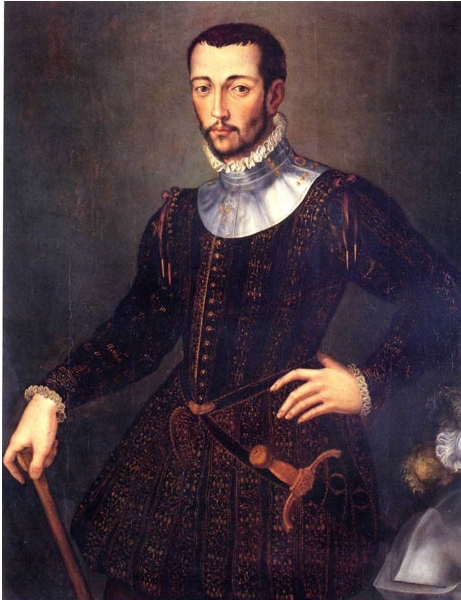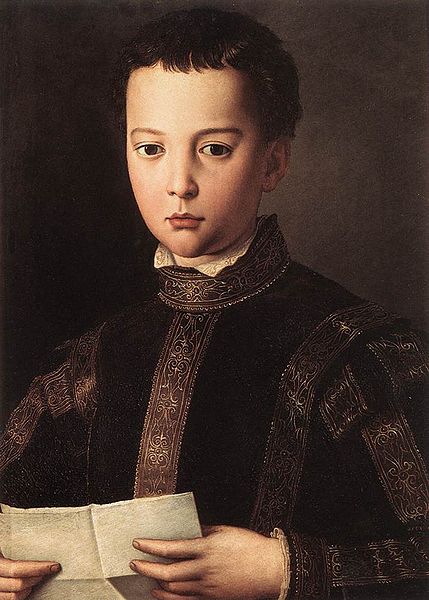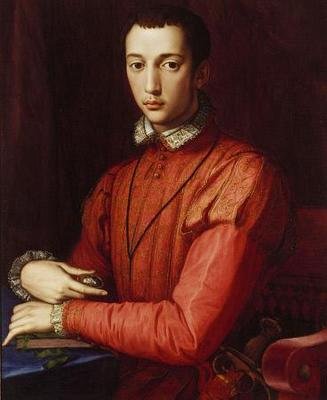<Back to Index>
- Encyclopaedist Louis Moréri, 1643
- Composer Johann Adolph Hasse, 1699
- Grand Duke of Tuscany Francesco I de' Medici, 1541
PAGE SPONSOR



Francesco I de' Medici, Grand Duke of Tuscany (25 March 1541 – 17 October 1587) was the second Grand Duke of Tuscany, ruling from 1574 to 1587.
Born in Florence, he was the son of Cosimo I de' Medici, Grand Duke of Tuscany and Eleonora di Toledo, and served as regent for his father starting in 1564.
On December 18, 1565, he married Joanna of Austria, youngest daughter of Ferdinand I, Holy Roman Emperor and Anna of Bohemia and Hungary, after among others Princess Elizabeth of Sweden had been considered. By all reports, it was not a happy marriage. Joanna was homesick for her native Austria, and Francesco was neither charming nor faithful. Joanna died at the age of thirty one in 1578. Soon after the Grand Duchess Joanna had died, Francesco went on to marry his Venetian mistress, Bianca Cappello, after aptly disposing of her husband, a Florentine bureaucrat. Because of the quick remarriage and similar occurrences among the Medici (Francesco's younger brother Pietro had reportedly killed his wife), rumors spread up that Francesco and Bianca had conspired to poison Johanna. Francesco reportedly built and decorated Villa Medicea di Pratolino for Bianca. She was, however, not always popular among Florentines. They had no children, but Francesco adopted her daughter by first marriage Pellegrina (1564- ?) and her son Antonio (August 29, 1576 - May 2, 1621), who was first adopted as newborn child by Bianca Cappello with the intention to present him to Francesco as "own child" by means of changeling.
Like his father, Francesco was often despotic, but while Cosimo had known how to maintain Florentine independence, Francesco acted more like a vassal of his father-in-law, the emperor, and subsequent Holy Roman Emperors. He continued the heavy taxation of his subjects in order to pay large sums to the empire.
He had an amateur's interest in manufacturing and sciences. He founded porcelain and stoneware manufacture, but these did not thrive until after his death. He continued his father's patronage of the arts, supporting artists and building the Medici Theater as well as founding the Accademia della Crusca. He was also passionately interested in chemistry and alchemy and spent many hours in his private laboratory / curio collection, the Studiolo in the Palazzo Vecchio, which held his collections of natural item and stones and allowed him to dabble in amateur chemistry and alchemical schemes.
Francesco and Bianca died on the same day. Although the original death certificates mention malaria, it has been widely speculated that the couple was poisened, possibly by Francesco's brother, Ferdinando. While some early forensic research supported the latter theory, forensic evidence from a study in 2010 found the parasite Plasmodium falciparum, which causes malaria, in the skeletal remains of Francesco I, strongly bolstering the infectious theory and the credibility of the official documents. (The whereabouts of Bianca's remains are unknown and therefore have not been tested.) Francesco was succeeded by his younger brother, Ferdinando I de' Medici, Grand Duke of Tuscany.
There is a famous portrait of Francesco as a child by Agnolo Bronzino, which hangs in the Uffizi Gallery in Florence.
Francesco's marriage to Bianca and the couple's death was exploited by Thomas Middleton for his tragedy Women Beware Women (published 1657). Francesco and Johanna had seven children.